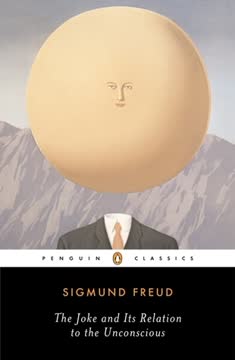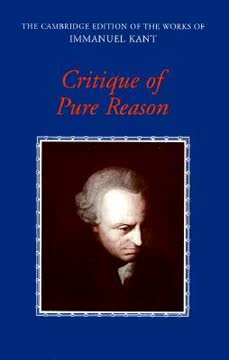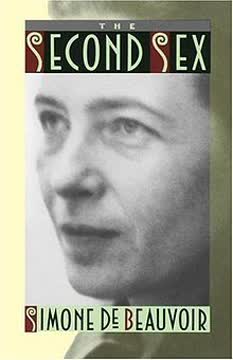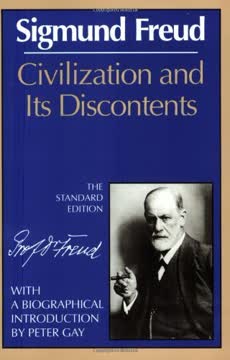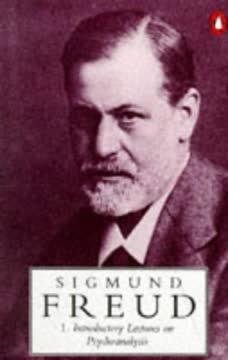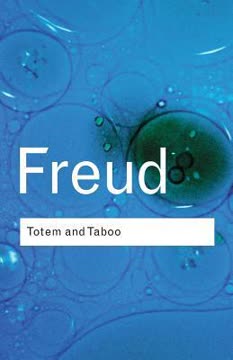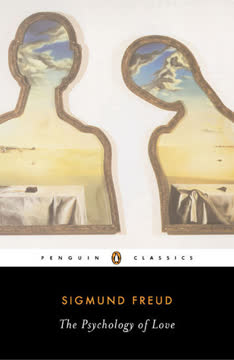Key Takeaways
1. Joke Technique: Economy in Expression
Everything seems to be a matter of economy, as Hamlet says (‘Thrift, thrift, Horatio!’; I.ii.180).
Brevity is essential. While not every short statement is a joke, the brevity of a joke is a peculiar kind, often achieved through specific technical devices. This brevity is not merely about using fewer words, but about a fundamental tendency towards economy in psychical expenditure.
Economy in words. The initial observation of economy comes from verbal jokes, where techniques like condensation (combining words) or multiple use (using the same word or sound for different meanings) reduce the linguistic material needed to express a thought. Examples include composite words like "famillionairely" or puns like "Trauring, aber wahr" (sad, but true/wedding ring).
Beyond mere words. This principle extends beyond linguistic economy to saving effort in thought processes themselves. While seemingly counterintuitive, the complex techniques employed by jokes ultimately aim to reduce the overall psychical effort required for expression or comprehension, making this saving a core aspect of their mechanism.
2. Technique Details: Condensation and Multiple Use
The multiple use of the same word, once as a whole and then broken up into its syllables, has been the first instance we have encountered of a technique diverging from condensation.
Condensation combines elements. One primary technique involves condensing multiple thoughts or words into a single expression. This can result in composite words (like Heine's "famillionairely") or modifications of existing words or phrases that carry the weight of omitted ideas.
Multiple use exploits language. Another key technique is the multiple use of the same linguistic material. This includes using a word as a whole and then broken into parts (like "Rousseau" becoming "roux et sot"), rearranging elements, or exploiting words with double meanings (literal vs. metaphorical, or true double entendre).
Economy underlies both. Both condensation and multiple use serve the principle of economy. Condensation achieves brevity by fusing elements, while multiple use saves the effort of introducing entirely new material by reusing existing linguistic forms, often linking disparate ideas through shared sounds or words.
3. Technique Details: Displacement and Faulty Thinking
I suggest we describe it as displacement, because the essential thing about it is its diversion of the train of thought, its displacement of the psychological emphasis to a different theme from the one first broached.
Displacement shifts focus. Displacement involves diverting the train of thought or psychological emphasis from the main point to a secondary one. This technique is evident in jokes where the reply responds to a misinterpreted or tangential aspect of the initial statement, as seen in the "salmon with mayonnaise" anecdote.
Faulty logic as technique. Jokes also employ seemingly flawed thinking, absurdity, or illogical connections as technical devices. Examples include the "cannon" joke (absurd advice illustrating foolishness) or the "borrowed kettle" story (contradictory excuses).
Hiding underlying meaning. These techniques, particularly displacement and apparent absurdity, often serve to disguise a hidden meaning or criticism. The surface illogicality or diversion captures attention, allowing a deeper, often forbidden, thought to be conveyed indirectly and elicit pleasure.
4. Tendentious Jokes: Overcoming Inhibition and Repression
The joke will allow us to turn to good account those ridiculous features in our enemy that the presence of opposing obstacles would not let us utter aloud or consciously; again, that is, it will get around restrictions and open up sources of pleasure that have become inaccessible.
Jokes serve intentions. Beyond merely providing pleasure through technique, many jokes are "tendentious," serving specific purposes or intentions. These intentions are primarily hostile (aggression, satire, defence) or obscene (sexual unmasking).
Circumventing obstacles. Tendentious jokes function by allowing the satisfaction of these intentions in the face of obstacles. These obstacles can be external (social constraints, authority figures) or internal (inhibitions, repression, shame, aesthetic objections).
Lifting inhibition. The pleasure derived from tendentious jokes is significantly amplified because they lift internal inhibitions or overcome repression. The joke's technique provides a "fore-pleasure" that supports the release of energy previously used to maintain these psychological barriers, enabling the forbidden intention to find expression and yield pleasure.
5. Obscene Jokes: Sexual Aggression and Fore-Pleasure
When we laugh at an indecent joke that is subtle, we are laughing at the same thing that causes the bumpkin to laugh in a coarse obscenity; in both cases the pleasure is drawn from the same source; but we would not be capable of laughing at the coarse obscenity, we would be ashamed, or it would appear disgusting to us; we can only laugh when the joke has come to our help.
Bawdry as unclothing. Obscene jokes originate from "bawdry," which is a form of sexual aggression aimed at unclothing or exposing another person, originally directed at women to provoke sexual arousal or shame.
Inhibition by culture. As culture and education advance, the direct expression of obscenity becomes inhibited by shame and repression. This creates an internal obstacle to the pleasure derived from sexual exposure.
Joke as facilitator. The obscene joke, particularly in its witty or subtle forms (like double entendre or allusion), overcomes this inhibition. It allows the listener to access the original pleasure of sexual unmasking by providing a "fore-pleasure" through its technique, bypassing the censorship that would block direct obscenity.
6. Hostile and Cynical Jokes: Rebellion Against Authority
If we bear in mind that the tendentious joke is so well suited to attacking the great, the dignified and the mighty – powers protected from direct disparagement by internal inhibitions or external circumstances – then we are forced into a particular view of certain groups of jokes which seemingly have to do with inferior and powerless figures.
Aggression finds an outlet. Hostile jokes allow the expression of aggressive impulses that are normally inhibited by social norms or internal constraints (like aesthetic objections to crude insults). They make the enemy small, contemptible, or comical.
Attacking authority. Jokes are particularly effective against figures of authority or institutions (like marriage or religious beliefs) that are protected from direct criticism. The joke represents a rebellion, a liberation from oppression, by allowing forbidden thoughts to be voiced indirectly.
Cynicism and scepticism. Cynical jokes attack respected institutions or moral precepts by revealing underlying, often unpleasant, truths (e.g., the cynical view of marriage). Sceptical jokes challenge the certainty of knowledge itself, exploiting ambiguities in concepts like "truth." Both use joke techniques to bypass the listener's respect or belief.
7. Joke Formation: A Momentary Plunge into the Unconscious
Let us decide, then, to propose the hypothesis that this is the course taken by joke-formation in the first person. A preconscious thought is given over for a moment to unconscious revision, and the result promptly grasped by conscious perception.
Involuntary emergence. Jokes often feel like sudden "bright ideas" that occur involuntarily, rather than being consciously constructed. This suggests a process outside of deliberate, conscious thought.
Accessing infantile thinking. The hypothesis is that a preconscious thought, seeking a form that provides pleasure (like wordplay or nonsense), momentarily dips into the unconscious. The unconscious, which retains the characteristics of infantile thinking, facilitates condensations and other techniques that are difficult or impossible in conscious thought.
Reclaiming childish pleasure. This momentary return to the unconscious, the "ancient home of its erstwhile play with words," allows the thought to repossess the childish sources of pleasure derived from free association, sound similarities, and liberated nonsense, which were suppressed during the development of rational, conscious thinking.
8. Joke Technique Mirrors Dream-Work Processes
Such a far-reaching correspondence as the one between the devices of the joke-work and those of the dream-work will hardly be accidental.
Shared mechanisms. The technical devices found in jokes – condensation, displacement, representation by absurdity, indirect representation – show a striking resemblance to the processes of the "dream-work" identified in dream analysis.
Condensation and displacement. Both jokes and dreams employ condensation to combine multiple elements into one, often using word similarities. Both use displacement to shift emphasis or substitute one idea for another, though dreams use it more extensively and often to distort meaning.
Indirect representation. Both rely on indirect representation, using allusion, symbolism, or small details to stand for larger concepts or forbidden thoughts. This shared toolkit suggests a common underlying psychological process or "scene of action."
9. The Joke as a Social Process
The joke on the other hand is the most social of all the psyche’s functions that aim to obtain pleasure.
Requires a third person. Unlike dreams, which are entirely asocial and private, jokes are fundamentally social. A tendentious joke typically requires three persons: the teller, the object of the joke, and the listener (the "third person") who experiences the pleasure and validates the joke.
Listener's role. The listener is crucial because they experience the full pleasure of the joke, often bursting into laughter while the teller remains straight-faced. This pleasure arises from the listener saving the psychical expenditure they would have needed to inhibit the thought or overcome the censorship themselves.
Communication is key. The urge to communicate a joke is inherent to its nature. The teller, unable to fully discharge the energy or experience the full pleasure alone, seeks the listener to complete the process, gaining reassurance of the joke's success and supplementing their own pleasure through the listener's reaction ("laughing par ricochet").
10. Joke vs. Comic: Different Psychological Origins
Jokes and the comic are above all distinguished by their localization in the psyche: the joke is as it were the contribution made to the comic from the realm of the unconscious.
Joke is made, comic is found. A key distinction is that a joke is actively "made" or invented, while the comic is typically "found" in persons, situations, or actions. The joke involves a deliberate (though perhaps momentarily unconscious) creative process, while the comic is often a matter of perception.
Different pleasure mechanisms. While both provide pleasure, the source differs. Joke pleasure is linked to the technique (economy, lifting inhibition) and often involves unconscious processes. Comic pleasure, as explored later, primarily arises from comparisons of expenditure in the preconscious.
Localization matters. The most significant difference lies in their psychological origin. The joke draws heavily on the resources and processes of the unconscious (condensation, displacement, infantile thinking). The comic, in contrast, seems to operate primarily within the preconscious, relying on comparisons and perceptions accessible to conscious thought.
11. Comic Pleasure: Saving Expenditure in Comparison
In laughter, then, according to our hypothesis, the determinants are given for an amount of psychical energy previously used in charging certain psychical pathways has become unusable, so that it can be freely released.
Laughter as discharge. Laughter is viewed as a manifestation of psychical energy discharge. It occurs when energy that was mobilized or used for a specific purpose suddenly becomes superfluous and is released.
Comparison of expenditures. Comic pleasure arises from a comparison between two psychical expenditures related to the same function. This comparison reveals a difference in the amount of energy used or prepared, and the surplus energy is discharged as laughter.
Types of comic comparison. This comparison can occur in various ways:
- Observing disproportionate movement (comparing other's large effort to one's own smaller necessary effort).
- Perceiving intellectual under-performance (comparing other's small effort to one's own larger necessary effort for logical thought).
- Disappointed expectation (comparing the large effort prepared for an anticipated event to the smaller effort actually needed).
- Degradation (comparing the large effort for imagining the sublime to the smaller effort for imagining the trivial).
12. The Naïve: A Borderline Case Linking Joke and Comic
The naïve, then, is a species of the comic, in so far as its pleasure comes from the difference [in quantity] of expenditure arising in the course of trying to understand the other, and it approaches the joke on account of the condition that the expenditure saved in the course of comparing must be an expenditure of inhibition.
Naïve as unintended. The naïve is a form of the comic that occurs unintentionally, typically in children or uncultivated adults, due to a lack of certain inhibitions. It is "found" rather than "made."
Lifting inhibition without effort. The pleasure from the naïve arises because the listener, who possesses the inhibition, perceives the speaker's lack of it. This comparison makes the listener's own habitual expenditure on inhibition suddenly unnecessary, and this saved energy is released as pleasure.
Bridge between joke and comic. The naïve links the joke and the comic because its pleasure, like that of the joke, comes from lifting an internal inhibition. However, unlike the joke, the naïve person does not actively overcome the inhibition; they simply lack it. The pleasure mechanism in the listener involves a comparison of expenditures, characteristic of the comic, but specifically related to the expenditure of inhibition, linking it to the joke's core function.
Last updated:
FAQ
What is The Joke and Its Relation to the Unconscious by Sigmund Freud about?
- Freud’s book explores the psychological mechanisms behind jokes, analyzing how they relate to unconscious mental processes and repressed desires.
- It draws parallels between jokes and dreams, suggesting both use similar techniques like condensation and displacement to disguise latent content.
- The work also examines the social and cultural functions of jokes, especially in the context of early 20th-century Vienna.
- Freud distinguishes between different types of jokes and investigates how they produce pleasure and reveal underlying societal tensions.
Why should I read The Joke and Its Relation to the Unconscious by Sigmund Freud?
- The book offers pioneering psychoanalytic insight into humor, connecting jokes to unconscious desires and mental processes.
- It provides a deeper understanding of the human psyche, especially the roles of repression, censorship, and the expression of repressed thoughts.
- Freud’s analysis is foundational for humor studies, psychoanalysis, and literary theory, making it essential reading for those interested in these fields.
- The book also offers a window into the cultural and social dynamics of Freud’s Vienna, enriching appreciation of humor’s social functions.
What are the key takeaways from The Joke and Its Relation to the Unconscious by Sigmund Freud?
- Jokes serve as a form of psychical economy, saving mental effort by allowing the expression of repressed desires or aggressive instincts.
- Freud introduces the concepts of “joke-work” and “dream-work,” highlighting the shared mechanisms between jokes and dreams.
- The book classifies jokes into tendentious (aggressive or sexual) and innocuous (harmless, wordplay-based) types, each with distinct psychological functions.
- Freud’s economic theory of humor explains how jokes, the comic, and humor each provide pleasure through different forms of mental energy savings.
What are the main types of jokes discussed in The Joke and Its Relation to the Unconscious by Freud?
- Tendentious jokes serve an intention, often aggressive, sexual, cynical, or critical, and help overcome internal or external inhibitions.
- Innocuous jokes are harmless, focusing on wordplay, ambiguity, and intellectual play without aggressive or sexual content.
- Freud further categorizes jokes as obscene, aggressive, cynical, sceptical, and naïve, each reflecting different underlying tendencies or sources of pleasure.
- The distinction between verbal (linguistic) and intellectual (idea-based) jokes is also emphasized.
How does Freud explain the psychological mechanism of pleasure in jokes in The Joke and Its Relation to the Unconscious?
- Pleasure arises from a saving of psychical effort, as jokes allow the mind to bypass usual inhibitions or emotional expenditure.
- Tendentious jokes provide satisfaction by releasing repressed aggressive or sexual instincts in a socially acceptable form.
- Innocuous jokes economize mental effort through linguistic play, making communication concise and enjoyable.
- Freud introduces the “fore-pleasure principle,” where small pleasures from joke techniques support the release of larger, repressed pleasures.
What is Freud’s “economic theory of humor” in The Joke and Its Relation to the Unconscious?
- Freud likens the psyche to a business, where jokes save mental energy by lifting inhibitions or avoiding emotional effort, resulting in pleasure.
- Linguistic condensation and displacement in jokes reduce the ‘cost’ of expression, making jokes efficient and pleasurable.
- Tendentious jokes release pent-up psychic energy that would otherwise be spent on repression.
- The economic analogy reflects the money-conscious culture of Freud’s Vienna, where saving effort and resources was highly valued.
How does Freud relate jokes to dreams in The Joke and Its Relation to the Unconscious?
- Both jokes and dreams use mechanisms like condensation and displacement to disguise and express unconscious wishes.
- Jokes and dreams bypass mental censorship, allowing repressed desires to surface in disguised, acceptable forms.
- While dreams are private and experienced by the dreamer, jokes are social and require an audience, but both originate from similar unconscious processes.
- Freud suggests that jokes, like dreams, often fulfill unconscious wishes related to sexuality or hostility.
What is the “joke-work” process in The Joke and Its Relation to the Unconscious by Freud?
- “Joke-work” refers to the mental processes that transform latent thoughts into jokes, analogous to “dream-work” in dreams.
- It involves techniques like condensation (combining ideas), displacement (shifting emphasis), and representation by the opposite.
- These processes allow jokes to bypass rational criticism and internal censorship, making repressed content accessible.
- Joke-work is essential for understanding how jokes are constructed and why they produce pleasure.
How does Freud distinguish between jokes, the comic, and humor in The Joke and Its Relation to the Unconscious?
- Jokes are consciously invented, often using linguistic or intellectual techniques, and may serve tendentious purposes.
- The comic arises from observing disproportion or exaggeration in others, producing laughter through a release of surplus psychical energy.
- Humor is a personal coping mechanism, allowing individuals to find pleasure despite distress by reinterpreting painful situations.
- Each has a distinct psychical economy: jokes save effort by lifting inhibition, the comic by releasing excess energy, and humor by saving emotional expenditure.
What is the “fore-pleasure principle” in The Joke and Its Relation to the Unconscious by Freud?
- The fore-pleasure principle states that a small amount of pleasure from a joke’s technical devices supports the release of a larger pleasure from overcoming inhibition or repression.
- Verbal play or nonsense in jokes provides initial pleasure that entices suppressed tendencies to break through.
- This principle explains why jokes can overcome strong internal resistances and produce hearty laughter.
- Freud suggests the fore-pleasure principle may apply to other areas of inner life where multiple pleasure sources converge.
How does Freud describe the social process and psychological dynamics of joke-telling in The Joke and Its Relation to the Unconscious?
- Joke-telling typically involves three persons: the joker, the listener, and sometimes a third who is the object of the joke.
- The joker gains pleasure from telling the joke and seeing others laugh, but often cannot laugh at their own joke due to internal obstacles.
- The listener experiences laughter by receiving the joke’s pleasure without the effort of overcoming inhibition, releasing saved energy.
- The urge to share jokes is strong because their full pleasurable effect requires social interaction and the listener’s response.
What social and cultural insights does Freud provide through his analysis of jokes in The Joke and Its Relation to the Unconscious?
- Freud’s collection of jokes reveals a society obsessed with wealth, social rank, and economic cunning, reflecting the values of Vienna at the time.
- Many jokes analyzed by Freud expose gender biases and misogyny, highlighting the male-dominated culture of his era.
- Jewish stereotypes and anti-Semitism are prevalent in the jokes, revealing both internal and external societal prejudices.
- Jokes function as social tools for expressing hostility, aggression, or sexual impulses in a repressed society, both reinforcing and challenging social norms.
Review Summary
The Joke and Its Relation to the Unconscious received mixed reviews. Some praised Freud's analysis of humor and its psychological roots, while others found it dry and overly academic. Reviewers noted Freud's examination of jokes' structure, their relation to the unconscious, and their social functions. Many struggled with outdated cultural references and translation issues. Some appreciated Freud's insights into human nature, while others criticized his theories as unfounded. The book was generally seen as an important historical work in humor studies, despite its flaws.
Similar Books
Download PDF
Download EPUB
.epub digital book format is ideal for reading ebooks on phones, tablets, and e-readers.
